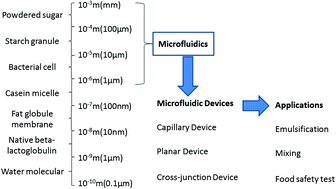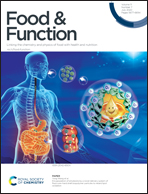Application of microfluidic technology in food processing
Abstract
Microfluidic technology is interdisciplinary with a diversity of applications including in food processing. The rapidly growing global population demands more advanced technologies in food processing to produce more functional and safer food, and for such processing microfluidic devices are a popular choice. This review critically critiques the state-of-the-art designs of microfluidic devices and their applications in food processing, and identifies the key research trends and future research directions for maximizing the value of microfluidic technology. Capillary, planar, and terrace droplet generation systems are currently used in the design of microfluidic devices, each with their strengths and weaknesses as applied in food processing, for emulsification, food safety measurements, and bioactive compound extraction. Conventional channel-based microfluidic devices are prone to clogging, and have high labor costs and low productivity, and their “directional pressure” restricts scaling-up capabilities. These disadvantages can be overcome by using “inside-out centrifugal force” and the new generation continuous flow thin-film microfluidic Vortex Fluidic Device (VFD) which facilitates translating laboratory processing into commercial products. Also highlighted is controlling protein–polysaccharide interactions and the applications of the produced ingredients in food formulations as targets for future development in the field.

- This article is part of the themed collection: Recent Review Articles


 Please wait while we load your content...
Please wait while we load your content...